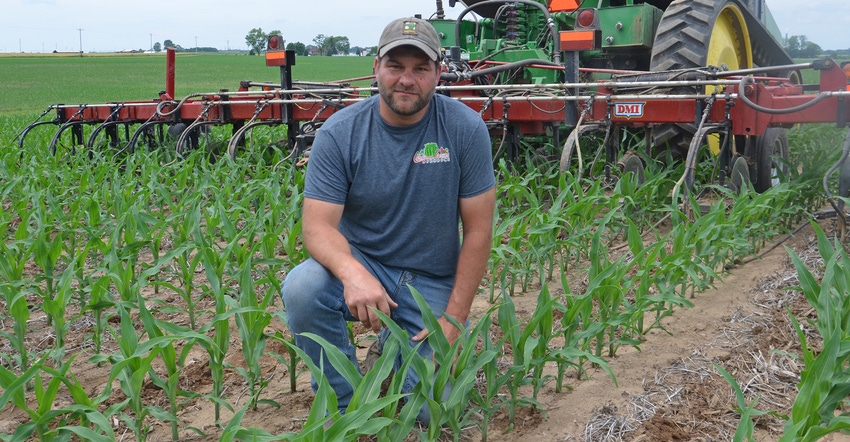
If you want to reach maximum economic corn yields, it helps to think like a corn plant. When does a corn plant need nutrients, and how does it access those nutrients?
Brooks Cardinal of Oaktown is convinced having enough nutrients ready for corn seedlings in the beginning and then adding more just before plants are ready to head into the grand growth phase, followed by pollination is essential to setting the stage for good yields. After that, it’s partly up to the weather. Sometimes it doesn’t cooperate, but you must set the stage.
“We had a dry stretch and more heat than we needed at key times in our area in 2020, but we still wound up with respectable yields,” he says. “We try to control the things we can, and one of those things is how we fertilize the crop.”
Unique placement
A couple years ago, Brooks and his brother, Brandon, made major changes on their nitrogen application toolbar. They equipped it to apply liquid nitrogen both through mole knives, injected under the soil, and through Yield Center 360 Y-Drops, on the surface. They cover 16 rows per pass.
“We’re big believers in the Y-Drop concept,” Cardinal says. “Most of the time we’re placing about half of the fertilizer at sidedressing time near the base of the plants, and half below the surface through the mole knives. We have irrigation to help move nitrogen into the soil if we need to do so. The goal is to split fertilizer up in different locations where various roots can access it easily.”
They utilize orifices to help control the rate of flow to the Y-Drops. On occasion, they may not run as much fertilizer through the mole knives. “There is still value in running them through the soil,” Cardinal says. “It helps get oxygen down into the soil at a key time.”
Besides nitrogen, their fertilizer mix usually contains sulfur, phosphorus, potassium, zinc and boron. They typically use a similar mix at planting as starter fertilizer, only at a lower rate.
“The only real change we’re planning for 2021 is to apply more potassium for the corn crop,” Cardinal says. “We pull tissue samples during the season, and some of our tissue tests indicated potassium was on the low side in some cases in 2020. Otherwise, we’re going back with the same program. Maybe we’ll have better luck with the weather this time around.”
About the Author(s)
You May Also Like




